Loft Peeping: The restoration of 51-53 White
The developer of 51-53 White, Tribecan David Friedman, invited me to tour the building now that it is just about finished and tricked out (in fact it is almost fully sold) and what a treat. It is one of the more spectacular renovations I have seen in a while — the interior and exterior are just a treasure-trove of classic Tribeca cast-iron architecture; it must have been so exciting to unearth each of them as the layers of the 20th Century got peeled away. (There’s a before picture below.)
You can see better pictures of the interiors in the listing if you want; I was absolutely fixated on the details and views, which are so quintessential Tribeca that I couldn’t stop taking pictures.
It took Friedman a year and a half to get through the approval process with the city, and five years and to get the job done. (He paid $22 million for the building.) Along the way he discovered other special details: since the synagogue is next door, he could install lot-line windows on the west side of the upper floors. He preserved the majestic columns on the interiors and raised the ceiling in the basement so he could use the space and expose the beams. He carved out a mezzanine roof deck and a back yard with canyon views of the steel shutters that he preserved on the back of the building.
“Restoring a building like this is so creative,” said Friedman, who lives around the corner with his family. “You see this mess and you have this vision. The end result is the most beautiful thing in the world.”
The building was constructed in 1858 — from its roof you can see it in a timeline among the neighbors — by A.C. Kingsland, a prosperous merchant and housed textile and dry goods firms. The building’s façade was originally faced in pure white Tuckahoe marble with elaborate window hoods, sills and a cast-iron storefront. But by the 1920s, the marble was coated in fire-retardant cement, a labor law fire-escape was strung across the façade, and all the cast-iron columns were covered with concrete block.
Friedman bought the building in 2016 in order to convert it to residential and add three stories to the roof. He removed the fire-escape, replaced all 76 windows, restored the marble and uncovered the cast-iron columns. He added mahogany storefront windows at the ground floor and exposed the brick walls and timber beams. There are now seven apartments and a gym in the basement. The penthouse has two decks with an outdoor kitchen and bathroom, a fireplace and a beam that can support a hot tub.
No dummy, Friedman saved a smaller apartment for himself.







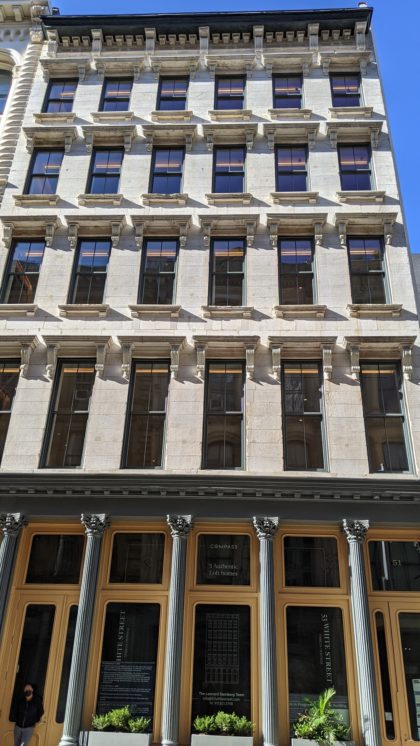
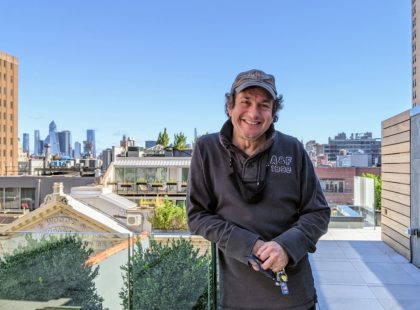
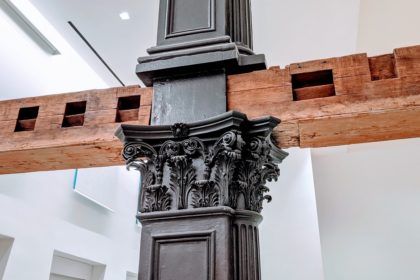
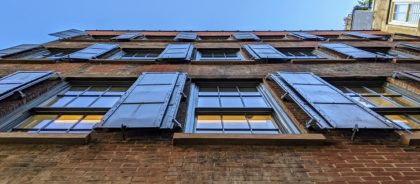
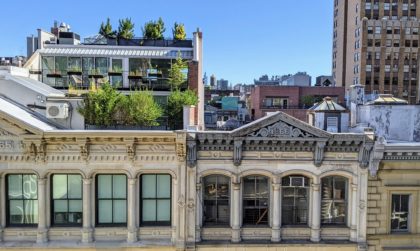
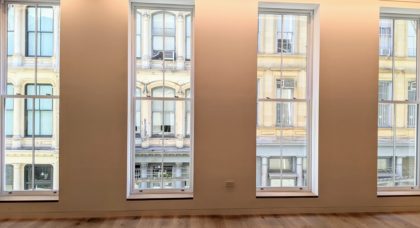
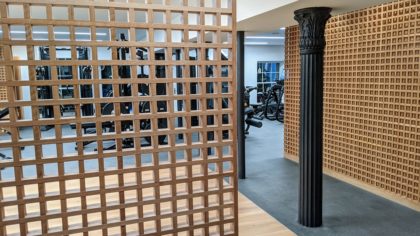
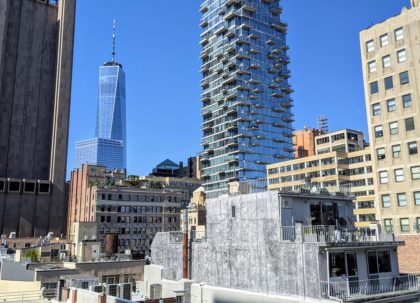
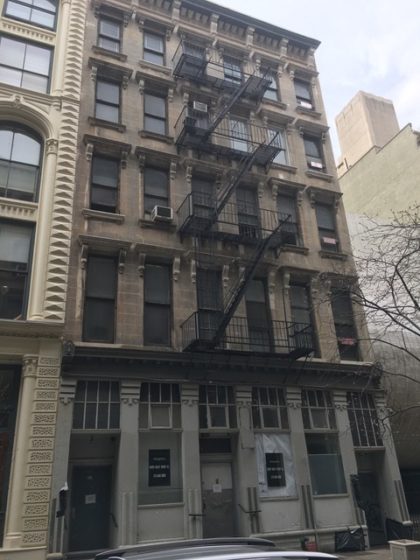
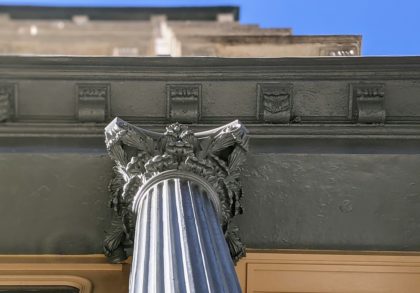








Very impressive. Wish I could be so fortunate to get a tour! Will be in NYC for Thanksgiving, will most definitely have to take a stroll by. Looks like Mr. Friedman methodically planned/designed this restoration while maintaining it’s originality, bravo.